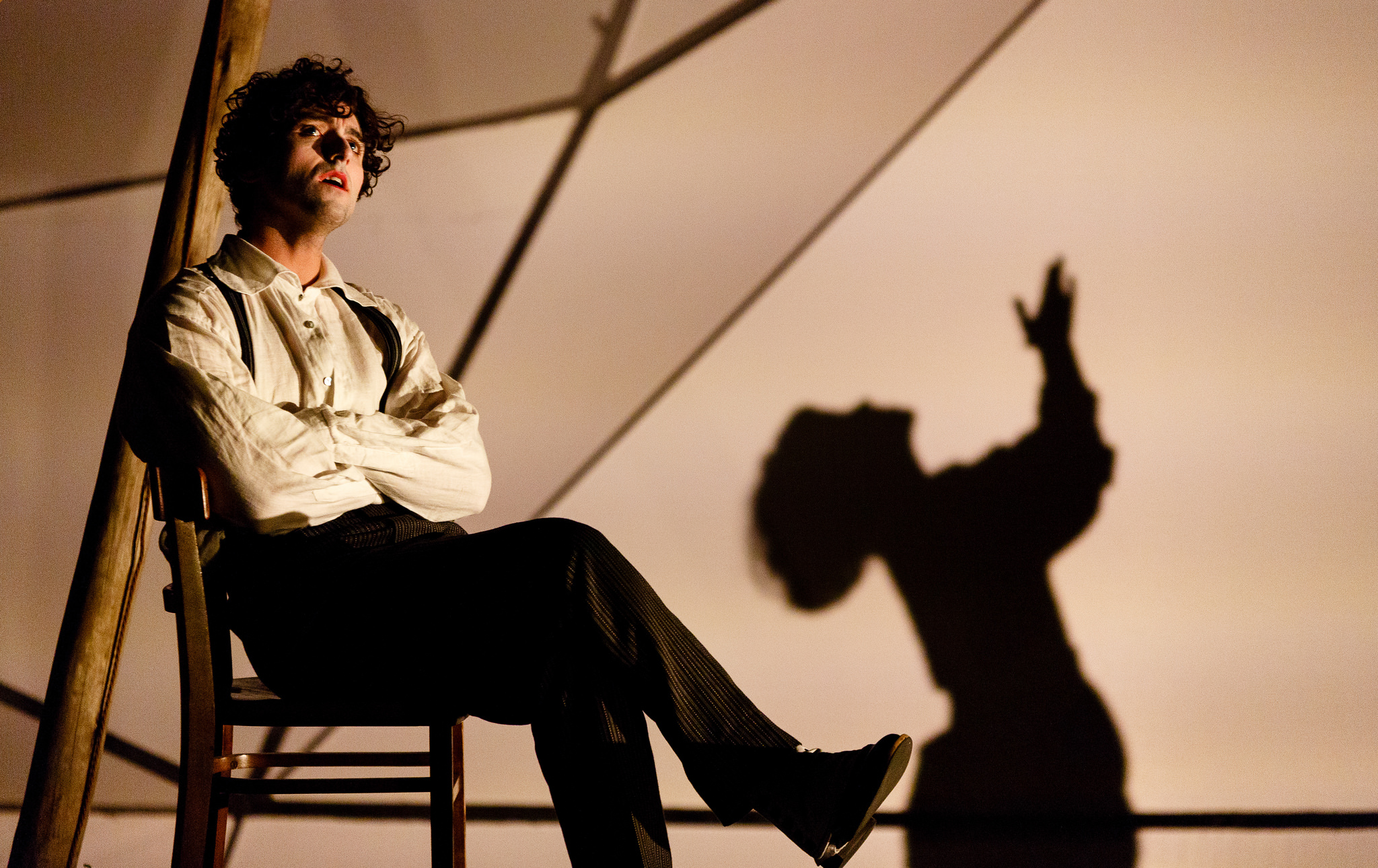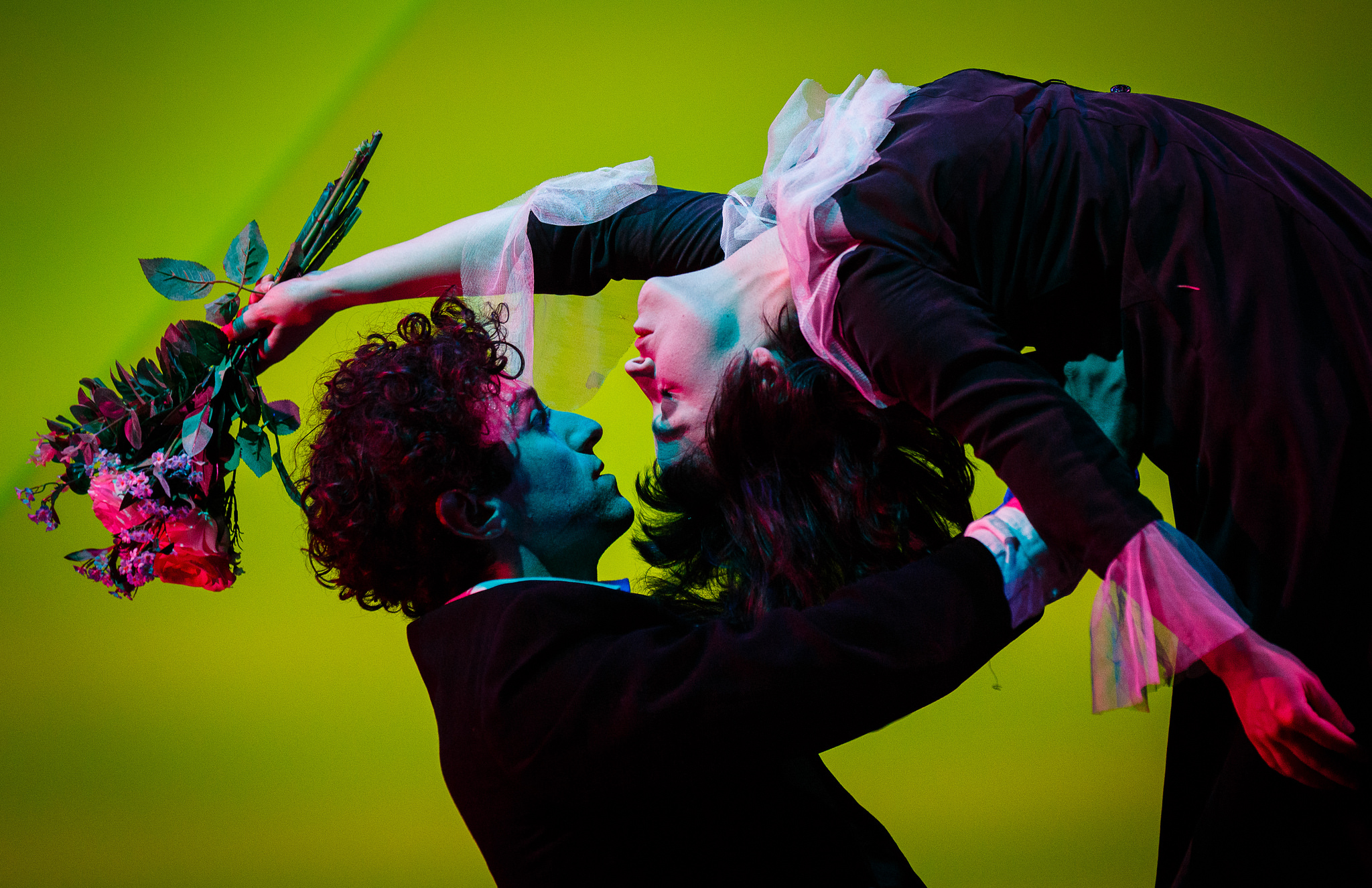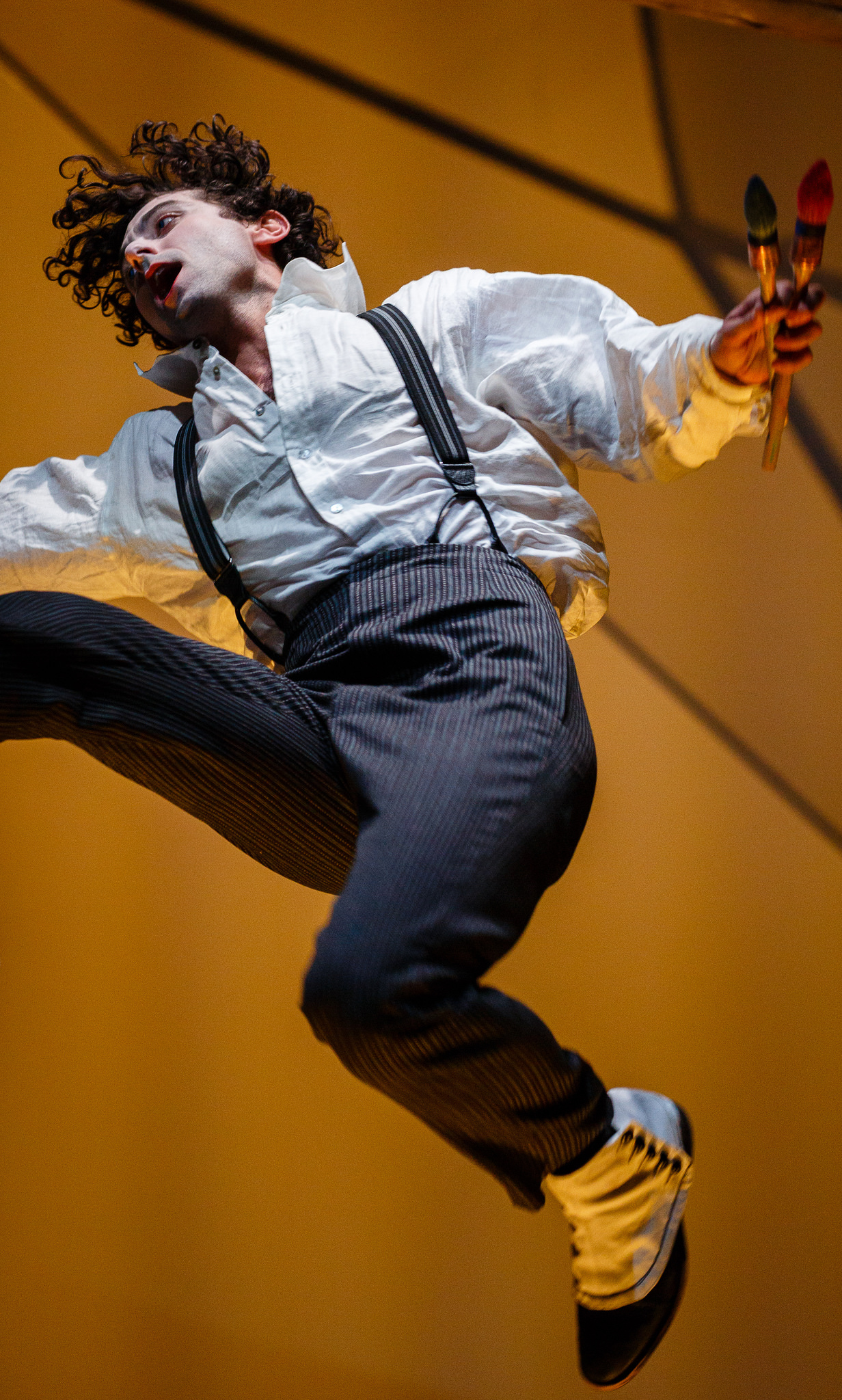Dock Street Theatre, Charleston
June 9, 2018
The Flying Lovers of Vitebsk isn’t the first work about an artist and his muse, and it’s unlikely to be the last. Turning painting into theatre – or even opera and musical theatre – is a rich seam, but rarely does it come off as well, and as seemingly effortlessly, as in the latest offering by Kneehigh, the ever-inventive Cornish theatre company whose work (Brief Encounter, Tristan & Yseult and The Red Shoes) has toured theatres and festivals across Australia in the recent past.
 Marc Antolin in The Flying Lovers of Vitebsk. Photo © Steve Tanner
Marc Antolin in The Flying Lovers of Vitebsk. Photo © Steve Tanner
The trick is twofold: one, to give living, visual life to a fundamentally static artform; and two, to make the muse – who often doubles as ‘humble’ model – as interesting as the invariably eccentric (and often egocentric) artist. Emma Rice’s economical, yet endlessly imaginative production – her last for Kneehigh before her ill-fated departure to helm Shakespeare’s Globe – achieves the first of these through the simplest of means – costume, a splash of light, pairs of shoes suggesting the Holocaust – as well as a multi-talented cast who sing, dance, act and play a range of musical instruments. And if, at first glance, Bella Chagall (née Rosenfeld) is a less vibrant figure set alongside the dazzling artworks of her husband, Marc, their life and times were never less than compelling.
Born into a sizable Jewish community in the Russian city of Vitebsk, the two were unlikely childhood sweethearts – she a wealthy jeweler’s daughter, he a self-absorbed visionary from a large family a fair few rungs beneath her on the social ladder. Returning to Russia to get married after early successes in Paris and Berlin, Chagall found himself trapped by the outbreak of the First World War and forced to seek refuge in Petersburg, working for Bella’s extended family in order to essentially dodge the draft. Following the October Revolution, the pair spent time in Vitebsk and Moscow where Marc became a leading light in early Soviet experiments with art for the people. Bella, who had once studied under Stanislavski, eventually found a niche working for Solomon (Shloyme) Mikhoels’ Yiddish Theatre, where Marc was to produce some of his finest work as a revolutionary set designer.
 The Flying Lovers of Vitebsk. Photo © Steve Tanner
The Flying Lovers of Vitebsk. Photo © Steve Tanner
As the play reveals, it was seldom plain sailing. The good times – a joyously realised wedding and honeymoon – were more often offset by the constant fear of pogroms, Marc’s moods, and his dislike of having to explain, much less constrain, his art. When Bella – who wrote poetry, but habitually seemed to suffer from an overwhelming sense of purposelessness – gave birth to their daughter Ida, her husband was on a creative high and didn’t come see them for four days! Forced out of his own art college – but then was Marc Chagall ever going to be an artist of the state? – the family left Soviet Russia for 20 years of rootless wandering. When her mother died in America of a streptococcal infection in the penicillin-strapped days immediately following World War II, it was left to Ida to publish Bella’s poignant Yiddish memoirs as a kind of belated memorial.
Mercifully, Rice’s trademark light touch adds much levity to an otherwise grim tale. The famous images of ‘flying lovers’ come off with remarkable ease thanks to a simple raked postage-stamp of a set and few ropes from which an actor might dangle. In fact, Sophia Clist’s elegant design – the framework reminiscent of a rickety huppah, her gorgeous costumes straight out of Chagall’s vibrant village scenes – is a miniature masterpiece, as is Malcolm Rippeth painterly lighting design. The script, by Daniel Jamieson, is both romantically poetic and dramatically effective, giving an audience plenty to laugh at, all the while bathing matters in a glow of nostalgia for times past but not quite forgotten.
Composer and Music Director Ian Ross is joined by the versatile James Gow. Together they play everything from piano to accordion and trumpet, the music ranging from 1930s’ ballads to Yiddish music theatre and Russian folk. The choreography takes similar cues with honours divided between Rice and Etta Murfitt. But the chief glory has to be the pitch-perfect performances of Marc Antolin as a surprisingly Welsh Marc Chagall and Daisy Maywood as a sweetly puckish Bella. Together they sing, dance and tell us their story with never a hint of mawkishness and much that is deeply touching.
 Marc Antolin in The Flying Lovers of Vitebsk. Photo © Steve Tanner
Marc Antolin in The Flying Lovers of Vitebsk. Photo © Steve Tanner
Before the Nazi invasion flattened Vitebsk, the city’s Jewish population stood at around 180,000. By 1944, only 180 had survived. The Flying Lovers of Vitebsk stands as an engaging meditation on the ever-flimsy boundaries between life and art and the personal cost of creating it. It also stands as a affecting testament to times past and peoples lost. Should it come to Australia – which given its eminent portability seems highly likely – this is one that should not be missed.
The 2019 Spoleto Festival will run from May 24 – June 9. Programming will be announced in January 2019











Comments
Log in to join the conversation.